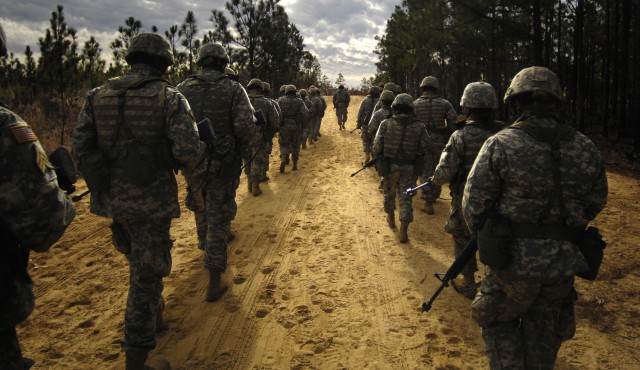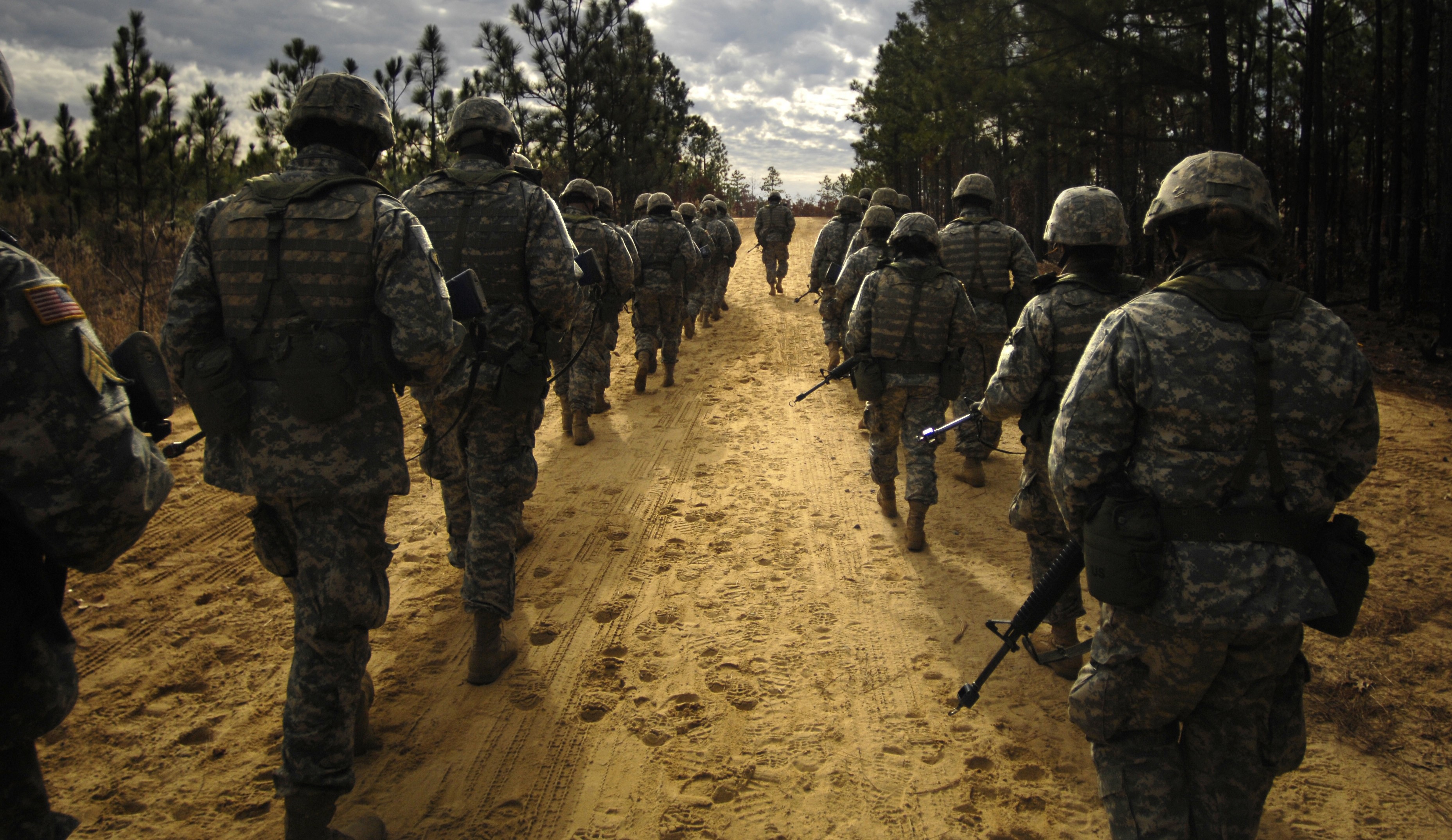While there is a lot of change taking place in U.S. Army Training and Doctrine Command and the Army overall, much has also remained unchanged.
TRADOC's mission to shape today's Army and the future combat force, for instance, has been steady since Gen. William Depuy took command July 1, 1973, as TRADOC's first commanding general, TRADOC officials said.
TRADOC and the U.S. Army Forces Command were created from the Continental Army Command headquartered at Fort Monroe, Va. TRADOC headquarters is still at Fort Monroe, pending its Base Realignment and Closure Commission-recommended move to Fort Eustis, Va. FORSCOM, once located at Fort Belvoir, Va., later moved to Fort McPherson, Ga.
TRADOC was established in 1973 in response to the Army's experiences in Southeast Asia, said Dr. J. Britt McCarley, TRADOC's chief historian. "One of the motivating ideas was that the Army needed to return to its primary Cold War mission of countering communist land power in Europe. TRADOC was established to train and educate individual Soldiers, create units with appropriate equipment, and formulate battlefield doctrine.
TRADOC is still accomplishing those essential tasks, even as the Army's missions and needs have changed -from the tank-on-tank battles in the fields of Europe during the Cold War to today's door-to-door, hand-to-hand combat against an enemy that blends in with the civilian population.
TRADOC-sponsored Army studies, such as the Division 86 study led by then-TRADOC commander Gen. Donn Starry, focused on the heavy division as the critical fighting component for contingencies in central Europe.
When Gen. John Wickham was named Army chief of staff in 1983 he directed TRADOC commander Gen. William Richardson to design a new, strategically deployable light-infantry division. To accomplish this, Richardson received authority to review and redesign the entire make up of the Army. The resulting "Army of Excellence" was undertaken by the Combined Arms Center at Fort Leavenworth, Kan., with support from the TRADOC branch schools.
The centerpiece of the reorganization was the light infantry division, to respond to contingency operations around the world. Army divisions increased from 16 in the active-duty Army and eight in the Army National Guard to 18 and 10, respectively. Between 1984 and 1986 organizational structure was given to the new AirLand Battle doctrine and to the new generation of weaponry introduced into the force in the late 1970s and '80s.
In the mid- to late 1990s the division-design focus shifted to the force projected for the early 21st century. A design project, titled "Force XXI," began in March 1994, and its results would supersede the Army of Excellence.
Army and TRADOC planners saw Force XXI as a new departure, an Army with a flexible engagement strategy structured in 21st-century technology. A key was the division-sized experimental force, which stood up at Fort Hood, Texas, in late 1994.
Beginning in April 1994 a series of "advanced war fighting experiments" tested the principals of digitization that would provide future forces with near-real-time information during a battle.
In June 1998 then-TRADOC commander Gen. William Hartzog, who had overseen Force XXI, announced a future division structure that was radically different from the existing one; the new division would have fewer Soldiers and armored vehicles. It would be strategically deployable and agile, and would feature a significantly changed command-and-control apparatus.
TRADOC also took the lead on the "Army After Next," a program that started in February 1996 and outlined a concept of fighting wars far in the future. AAN project officials sought to develop a credible concept document that could win Army support for 15 to 30 years beyond 1996.
Planners perceived potential for a military doctrine "leap ahead," due to emerging technologies of the time. Testing and analysis would be provided by a series of war games at the Center for Strategic Leadership at the U.S. Army War College in Carlisle, Pa.
By the close of 1996 the AAN project had grown into a major program involving planners from all the armed services.
In 1999 then-Army Chief of Staff Gen. Eric Shinseki and Secretary of the Army Louis Caldera outlined their vision for the Army of the future, which included rapidly deployable forces and equipment capable of responding to a full spectrum of operations. This vision was termed "Transformation" and would integrate the capabilities of air, land, sea and space.
The total initiative would include three phases. The initial phase included the stand up of two initial brigade combat teams at Fort Lewis, Wash., which would employ surrogate vehicles and "off-the-shelf" equipment. There would also be an interim phase punctuated by the fielding of a new "interim armored vehicle" that would carry the lighter, more agile force into combat.
The third phase would see the conversion of the IBCTs into the "Objective Force" of about 2008 to 2010.
During the Transformation initiative, the Army was called upon to fight in Afghanistan and Iraq. Through the Center for Army Lessons Learned at Fort Leavenworth, TRADOC has been proactive in how it has changed the way it trains Soldiers; the training is more realistic and relevant to the situations Soldiers face in both combat theaters.
Early in operations Enduring Freedom and Iraqi Freedom, the Army learned that many casualties were caused by accidental discharges of Soldiers' weapons. TRADOC, through U.S. Army Accessions Command, one of its major subordinate commands responsible for initial military training, initiated weapons-immersion training. Within the first three days of basic combat training, the Soldiers were issued their weapons. They took them to class, meals and into barracks. Due to this change in training, accidental discharges in theater dropped dramatically.
TRADOC also took lessons learned from OEF and OIF and applied them to the doctrine under which the Army operates. In the summer of 2006 the Army and Marine Corps put in place doctrine to help operators as they faced the challenges of asymmetrical warfare: Army FM 3-24 and Marine Corps Warfighting Publication 3-33.5, or the Joint Counterinsurgency Manual.
Not only was this manual a joint-services publication, it also included feedback and insights from the State Department, Central Intelligence Agency, academic experts and representatives of the international human-rights community, and more than 1,000 comments from people performing missions in Iraq and Afghanistan. Many of the practices outlined in FM 3-24 are currently being practiced in Iraq.
In the 35 years since TRADOC was established, the Army has been called to serve in many ways. Through peacekeeping missions in Bosnia to freeing hostages in Grenada to combat missions in Afghanistan and Iraq, TRADOC has trained Soldiers to complete the mission, and has learned from the missions and applied the lessons to what the Army may face next.
With relevant training provided to Soldiers by Accessions Command, new doctrine relevant to the fight provided by the Combined Arms Center, and an eye on the future by the Army Capabilities Integration Center, TRADOC will continue to have a major impact on the structure and capability of our Army to be the strength of our nation.
"We will continue to prepare our forces to succeed in the current conflict," said Army Chief of Staff Gen. George Casey in an August 2007 speech to the National Press Club. "We've made great strides in equipping our Soldiers and have continually adapted our training and equipment to keep pace with an evolving enemy. We remain committed to providing our deploying Soldiers with the best available equipment to ensure they maintain a technological advantage over any enemy.
"We will continue to provide tough, demanding training to them to give Soldiers the confidence they need to succeed in these complex environments. Our military success in this difficult war is tied to the capabilities of our leaders and of our Soldiers, and we won't fail to prepare them for success," Casey said.
"Transformation requires a holistic effort to adapt how we fight, how we train, how we modernize, develop leaders, station our forces, and support our Soldiers, families and civilians. Transformation is a journey. It's not a destination," he said.


Social Sharing